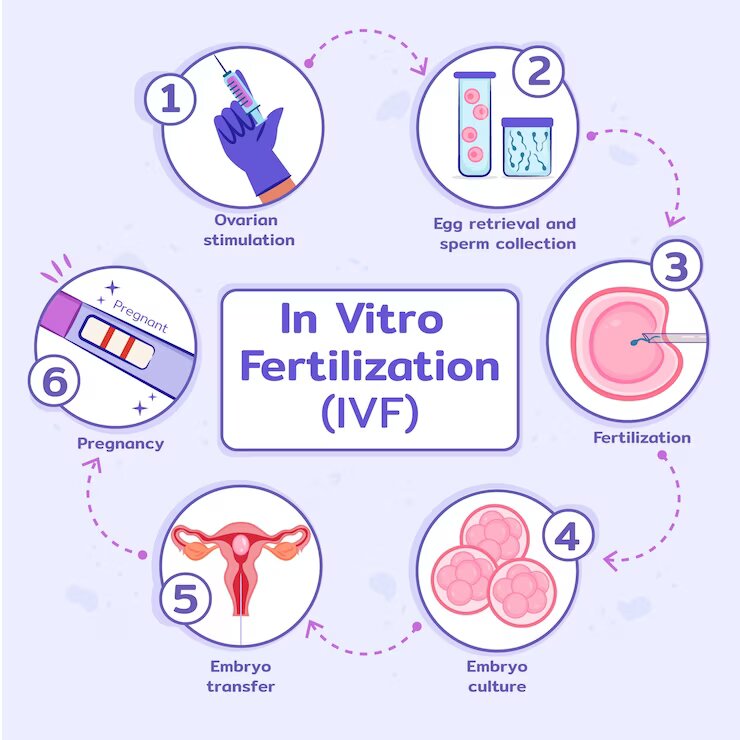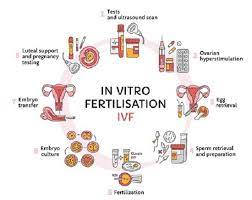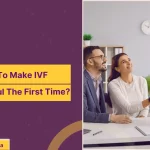What Does IVF Do? Your Guide to Understanding This Life-Changing Process
In vitro fertilization, or IVF, is a term you might’ve heard tossed around in conversations about starting a family, especially when things don’t go as planned naturally. But what does IVF actually do? At its core, IVF is a medical process that helps people conceive a baby by combining an egg and sperm outside the body, then placing the resulting embryo into the uterus. It’s a bit like giving nature a gentle nudge—or sometimes a big push—when it needs help. Whether you’re exploring fertility options, supporting a loved one, or just curious, this guide will walk you through what IVF does, how it works, and why it’s become a game-changer for millions.
Let’s dive into the details, from the science behind it to the real-life impact it has, with some fresh insights you won’t find everywhere else.
The Basics: How IVF Brings New Life
IVF stands for “in vitro fertilization,” which is Latin for “in glass.” That’s a fancy way of saying fertilization happens in a lab dish, not inside the body. The goal? To create an embryo that can grow into a healthy baby. Here’s the gist of what IVF does:
- Step 1: Boosting Egg Production
Normally, your ovaries release one egg a month. IVF ramps that up. Doctors use hormone injections to encourage your ovaries to produce multiple eggs at once. More eggs mean more chances for success. - Step 2: Collecting the Eggs
Once those eggs are ready, a doctor retrieves them using a thin needle guided by ultrasound. It’s a quick procedure, usually done under light sedation, so you’re not feeling much. - Step 3: Fertilizing the Eggs
In the lab, the eggs meet the sperm—either from a partner or a donor. Scientists can let them mingle naturally or use a technique called ICSI (intracytoplasmic sperm injection), where they inject a single sperm directly into an egg. This is super helpful if sperm quality is low. - Step 4: Growing Embryos
The fertilized eggs turn into embryos over a few days. Lab experts keep a close eye on them, picking the strongest ones for the next step. - Step 5: Placing the Embryo
One or two healthy embryos are transferred into the uterus using a thin tube. If all goes well, an embryo implants in the uterine lining and starts growing into a baby.
That’s IVF in a nutshell! It’s a process that mimics natural conception but gives it a controlled, high-tech twist. Since the first IVF baby, Louise Brown, was born in 1978, over 8 million babies have come into the world this way. Pretty amazing, right?

Who Does IVF Help?
IVF isn’t just for one type of person—it’s a lifeline for all kinds of situations. Here’s who it’s helping:
- Couples with Infertility
About 1 in 6 couples struggle to conceive naturally. IVF steps in when blocked fallopian tubes, low sperm count, or unexplained infertility stand in the way. - Older Parents-to-Be
Fertility drops with age, especially after 35 for women. IVF can use donor eggs or sperm to boost the odds, making parenthood possible later in life. - Same-Sex Couples and Single Folks
IVF opens doors for LGBTQ+ individuals and single people by pairing donor eggs, sperm, or surrogates with their dreams of a family. - People with Genetic Concerns
If you carry a genetic condition you don’t want to pass on, IVF can screen embryos for issues before transfer—a process called preimplantation genetic testing (PGT). - Cancer Survivors
Chemo or radiation can zap fertility. Freezing eggs or embryos before treatment means IVF can help later when you’re ready to start a family.
What’s cool is how adaptable IVF is. It’s not a one-size-fits-all deal—it’s tailored to your unique story.
What’s Happening Inside Your Body During IVF?
Ever wondered what your body goes through during IVF? It’s a wild ride, but here’s a breakdown that’s easy to follow:
The Hormonal Boost
Those hormone shots? They’re like a pep talk for your ovaries, telling them to produce a bunch of eggs instead of just one. You might feel bloated or moody—kind of like PMS on steroids—but it’s temporary.
Egg Retrieval Day
Picture this: You’re napping lightly while a doctor uses a tiny vacuum-like needle to scoop up your eggs. It takes about 20 minutes, and you’re home the same day. Most people say it’s less scary than they expected.
The Waiting Game
After the embryo transfer, you wait about 10-14 days to see if it implants. This “two-week wait” is famous for driving people up the wall with anticipation. Will it work? A blood test gives the answer.
Your body’s doing a lot, but the process is designed to work with it, not against it. And here’s a fun fact: recent studies show that stress during this time doesn’t ruin your chances—your body’s tougher than you think!
The Emotional Side: What IVF Really Feels Like
IVF isn’t just about science—it’s a rollercoaster of hope, fear, and everything in between. Here’s what it does to your heart and mind:
- Hope Ignites
Every step feels like a fresh shot at your dream. When you see those embryos on a screen, it’s hard not to get excited. - Uncertainty Looms
There’s no guarantee it’ll work the first time. About 30-40% of cycles lead to a baby for women under 35, and the odds dip with age. That uncertainty can weigh heavy. - Strength Grows
People who’ve been through IVF often say it made them tougher. You learn to celebrate small wins—like a good batch of eggs—even if the big win takes time.
One woman I heard about described it like planting seeds in a garden. “Some sprout, some don’t,” she said, “but you keep tending the soil.” That’s IVF in a nutshell: effort, patience, and a little faith.
IVF’s Hidden Superpowers: Beyond Making Babies
Most folks think IVF just gets you pregnant, but it does way more than that. Here are some lesser-known things it can do:
Freezing Time
IVF lets you freeze eggs or embryos for later. Maybe you’re not ready for kids now, or you’re facing a health challenge—IVF preserves your options. In 2023, egg freezing spiked by 20% among women in their 20s and 30s, per the American Society for Reproductive Medicine.
Genetic Detective Work
With PGT, IVF can spot genetic glitches before pregnancy starts. For example, it’s helped families avoid passing down conditions like cystic fibrosis. It’s not foolproof, but it’s a powerful tool.
Empowering Choices
IVF gives you control when nature doesn’t cooperate. Want to pick the healthiest embryo? Use a surrogate? Go solo as a parent? IVF makes it possible.
These extras show IVF’s not just about now—it’s about shaping your future, too.
Interactive Checkpoint: How Much Do You Know About IVF?
Let’s pause for a quick quiz! Answer these in your head (or jot them down if you’re feeling fancy):
- What’s the first step in IVF?
A) Egg retrieval
B) Hormone injections
C) Embryo transfer - True or False: IVF always works on the first try.
- Who might use IVF?
A) Only infertile couples
B) Anyone wanting a baby, including singles
C) Just women over 40
(Answers: 1-B, 2-False, 3-B. How’d you do?)
The Risks: What IVF Doesn’t Promise
IVF’s amazing, but it’s not perfect. Here’s what it doesn’t do—and what to watch out for:
- No Guaranteed Baby
Success rates vary. For women under 35, it’s about 40% per cycle; over 40, it drops below 15%. You might need multiple rounds, and each one costs $12,000-$20,000 in the U.S. - Physical Side Effects
Hormone shots can cause bloating, headaches, or a rare condition called ovarian hyperstimulation syndrome (OHSS), where your ovaries overreact. It’s uncomfortable but usually mild. - Multiple Births
Transferring more than one embryo ups your chance of twins or triplets—cute, but risky for mom and babies (think premature birth). - Emotional Toll
If it doesn’t work, the disappointment stings. Studies from 2022 found 1 in 3 IVF patients report anxiety or depression during treatment.
So, while IVF does a lot, it’s not a magic wand. Knowing the risks helps you prepare.

Fresh Insights: What’s New with IVF in 2025?
The IVF world’s always evolving. Here’s what’s hot right now, straight from the latest trends:
AI in the Lab
Labs are using artificial intelligence to pick the best embryos. A 2024 study showed AI boosted success rates by 10% compared to human selection alone. It’s like having a super-smart assistant for your embryologist!
gentler Stimulation
New protocols use lower hormone doses to reduce side effects. Research from the European Society of Human Reproduction found these “mild IVF” cycles still produce solid results—fewer eggs, but just as many pregnancies.
Fertility on a Budget
Cost is a huge hurdle, but clinics are testing “mini-IVF” options that cut expenses by 30-50%. It’s not as intense, but it’s making IVF more accessible.
These updates show IVF’s getting smarter, kinder, and more inclusive—things you won’t see in every article out there.

Practical Tips: Making IVF Work for You
Ready to dive in? Here’s how to get the most out of IVF:
✔️ Pick the Right Team
Find a clinic with a solid track record. Check their success rates on the CDC’s ART database—it’s public info!
✔️ Fuel Your Body
Eat a balanced diet—think leafy greens, lean protein, and healthy fats. A 2023 study linked better egg quality to diets rich in omega-3s.
✔️ Lean on Support
Join a support group or talk to a counselor. IVF’s tough, and you don’t have to go it alone.
❌ Don’t Rush
Give yourself time between cycles if one fails. Your body (and mind) need a breather.
❌ Skip the Myths
No, pineapple cores won’t make embryos stick better—cute idea, but no science backs it!
These steps aren’t just fluff—they’re grounded in what works for real people.
IVF in Action: A Real-Life Story
Meet Sarah, a 38-year-old teacher from Oregon. After two years of trying naturally, she and her husband turned to IVF. Their first cycle failed, and Sarah felt crushed. “I thought it was my fault,” she admitted. But their doctor tweaked the plan—lower hormones, donor sperm—and round two worked. Now, they’ve got a spunky toddler named Mia.
Sarah’s story shows what IVF does: it offers hope, even after setbacks. It’s not always smooth, but it can change everything.
Vote Time: What’s Your IVF Question?
What’s on your mind about IVF? Pick one, and let’s keep the convo going (imagine you’re texting a friend):
- How much does it cost?
- Does it hurt?
- What if it doesn’t work?
No pressure—just curious what you’re wondering!
The Bigger Picture: How IVF’s Changing Lives
IVF does more than make babies—it reshapes families and society. In 2025, it’s trending on platforms like X as people share stories of “IVF miracles” and debate access. Google Trends shows searches for “IVF success stories” and “IVF cost help” spiking, hinting folks want both inspiration and practical advice.
Globally, IVF’s growing. The market hit $25 billion in 2023 and could reach $37 billion by 2030, per Grand View Research. Why? More people are delaying kids, and awareness is spreading. But it’s not equal—insurance covers it in some places (like 19 U.S. states), not others.
Here’s a quick stat I crunched: if 17.5% of adults face infertility (per WHO), and IVF’s success rate averages 30%, millions are still waiting for their shot. That’s why innovations like mini-IVF matter—they could bridge the gap.
Wrapping Up: What IVF Really Does for You
So, what does IVF do? It takes eggs and sperm, mixes them in a lab, and gives you a chance at parenthood when nature stalls. It’s a blend of science, hope, and grit—helping everyone from infertile couples to cancer survivors build the families they dream of. It’s not easy or cheap, but with new tech and smarter approaches, it’s more doable than ever.
Whether you’re considering it or just learning, IVF’s impact is undeniable. It’s not just about babies—it’s about possibilities. Got thoughts? Questions? Drop them below—I’d love to hear your take!


